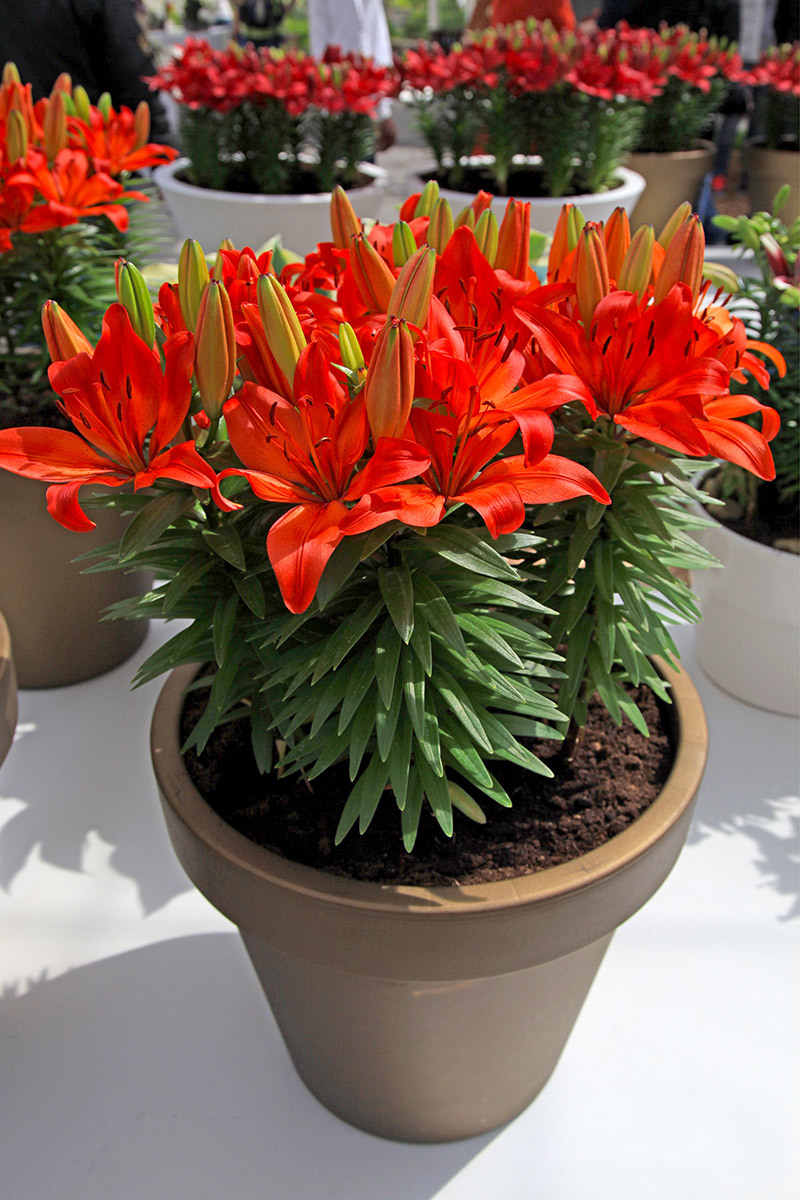Sunflowers: Uncovering 8 Lesser-Known Facts
Posted on 24/08/2025
Sunflowers: Uncovering 8 Lesser-Known Facts
Sunflowers captivate the imagination with their towering heights and radiant yellow blooms, but how much do you truly know about these garden giants? Beyond their iconic appearance and symbolism of joy, sunflowers have deep roots in human culture, science, and ecology. In this article, we'll dive beyond the basics and unveil eight surprising sunflower facts that will transform your appreciation for these remarkable plants. Whether you enjoy cultivating sunflowers in your backyard or simply admire their beauty, you'll find something new and fascinating in this comprehensive guide.

1. Sunflowers Don't Always Follow the Sun
We've all heard the charming story: sunflowers track the sun across the sky, turning their heads from east to west in a behavior known as heliotropism. But did you know that this is only true for young, growing sunflowers?
- Young sunflowers do indeed track the sun, maximizing their light absorption and boosting growth.
- However, as the sunflower matures and its flower head becomes heavy, it typically settles facing east and stops following the sun.
This evolutionary adaptation helps adult sunflowers warm up quickly in the morning sun, making them more visible to pollinators like bees, ensuring a successful reproduction cycle.
2. Sunflowers Have Edible and Nutrient-Rich Components
Most people are aware of sunflower seeds as a healthy snack or salad topping, but that's just scratching the surface of their edible potential. Did you know that almost every part of the sunflower can be consumed or used in some way?
- Young flower buds can be steamed and eaten like artichokes.
- Sunflower petals add a splash of color and a mild nutty flavor to salads.
- The stalk, when peeled, reveals a sweet core that can be eaten much like celery.
- Sunflower oil, widely known for its high vitamin E content, is extracted from seeds and is a staple in healthy cooking.
Sunflowers are a powerhouse of nutrition--rich in healthy fats, protein, fiber, and essential minerals, offering benefits far beyond their aesthetic appeal.
3. Sunflowers Originated in North America
Many assume that the impressive sunflower must be native to sunny Mediterranean fields, but its true origin story is rooted in North America.
- Archaeological evidence suggests sunflowers were cultivated by Indigenous peoples over 4,500 years ago across present-day United States and Mexico.
- The native tribes valued sunflowers not just as food, but for dyes, medicine, and even spiritual ceremonies.
- Sunflowers only reached Europe in the 16th century, where their ornamental and agricultural popularity blossomed.
Today, this iconic plant is grown worldwide, but its deep connection to North American history is an often-overlooked fact.
4. A Single Sunflower Head Hosts Thousands of Tiny Flowers
Next time you gaze upon a mammoth sunflower bloom, look closer--you're not seeing a single flower, but a remarkable cluster of thousands.
- What appears to be a single flower is actually a composite inflorescence called a capitulum.
- The center of the sunflower head consists of 1,000 to 2,000 tiny individual flowers, or florets, each capable of producing a seed.
- The outer "petals" are, in fact, specialized flowers called ray florets that attract pollinators.
This complex floral architecture demonstrates why sunflowers are not just beautiful--they're ingeniously designed for reproductive success.
5. Sunflowers Can Grow to Astonishing Heights
If you're impressed by tall sunflowers in summer gardens, prepare for a record-breaking revelation.
- The world record for the tallest sunflower stands at a staggering 30 feet 1 inch (9.17 meters), set by Hans-Peter Schiffer of Germany in 2014.
- Common garden varieties typically reach between 6 and 12 feet, but some "giant" types are bred to reach heights that dwarf the average gardener.
- Sunflowers are fast-growing plants, often achieving their gigantic size in just one season due to their unique cell expansion and energy-efficient metabolism.
If you're looking to compete for your own local gardening records, sunny soils, plenty of water, and ample space are key to encouraging your sunflowers skyward.
6. Sunflowers Cleanse the Environment
Sunflowers are more than just an attractive feature; they serve as powerful tools for environmental health. This process, called phytoremediation, is one of the most intriguing environmental uses of sunflowers.
- Sunflowers can absorb toxic heavy metals such as lead, arsenic, and uranium from contaminated soil and water.
- They were famously used to help clean up radioactive contaminants after the Chernobyl and Fukushima nuclear disasters.
- Their deep roots and fast growth make them ideal for restoring the health of degraded ecosystems.
Planting sunflowers can be more than beautiful--it can be a positive action for restoring polluted environments.
7. Sunflowers Are Mathematically Perfect
Have you ever noticed the mesmerizing spiral patterns in a sunflower's center? There's math behind their beauty!
- The arrangement of seeds in a sunflower head follows the Fibonacci sequence, resulting in two sets of interlocking spirals: typically 34 spirals in one direction and 55 in another, both Fibonacci numbers.
- This pattern allows for the most efficient packing of seeds in the flower head, maximizing space and minimizing waste.
- The result is not just visually pleasing, but a wonder of natural engineering.
The intersection of mathematics and biology in sunflowers is a classic example of nature's underlying precision and harmony.
8. Sunflowers Have Inspired Art, Science, and Culture
Sunflowers do more than beautify gardens--they've made a vibrant impression across human history.
- Perhaps most famously, Vincent van Gogh immortalized sunflowers in his iconic series of paintings, using their bold shapes and brilliant colors as a symbol of hope and gratitude.
- In the language of flowers, sunflowers symbolize loyalty, adoration, and vitality--attributes that have earned them a place in folklore and celebrations around the world.
- Beyond art, the sunflower's scientific contributions include studies on genetics, renewable energy, and even space agriculture, as NASA has explored growing sunflowers outside Earth's atmosphere.
Sunflowers continue to shape human imagination, science, and spirit in remarkable and unexpected ways.
Why Sunflowers Deserve More Attention
Sunflowers, with their unique blend of utility, symbolism, and beauty, are far more than just another garden flower. From their origins as a staple crop of Indigenous peoples to their starring role in phytoremediation and mathematics, these plants have been quietly influencing the world for thousands of years.
- They offer critical ecological services, from feeding pollinators and birds to cleansing our environment.
- They provide nutritional benefits in unexpected forms, from petals to stalks.
- They surprise with unique features like their composite blooms and Fibonacci spirals.
If you're considering adding a little sunshine to your life, sunflowers are a hardy, versatile, and endlessly fascinating choice! With so many lesser-known sunflower facts to explore, there's always something new to discover in the world of these botanical marvels.

Frequently Asked Questions About Unique Sunflower Facts
What is the rarest variety of sunflower?
The Schweinitz's sunflower (Helianthus schweinitzii), native to the Carolinas, is among the rarest sunflower species and is federally listed as endangered.
Can growing sunflowers improve my soil?
Yes! Sunflowers draw toxins from the soil and, once removed after harvest, help create a cleaner, healthier environment. Their deep roots also promote soil aeration.
Do sunflowers attract pollinators?
Absolutely. Both bees and butterflies flock to sunflower heads for their abundance of nectar and pollen, assisting with pollination in your garden ecosystem.
How long do sunflowers take to grow?
Most sunflower species germinate in about a week and can reach full maturity within 70 to 100 days, depending on the variety and growing conditions.
Are there other uses for sunflowers beyond seeds and oil?
Certainly! Beyond their edible applications, sunflowers are used for natural dyes, animal feed, birdseed, biodegradable plastics, and as ornamental cut flowers.
Final Thoughts: Celebrate the Sunflower's Hidden Depths
Sunflowers are much more than the symbol of summer--they are a fascinating intersection of culture, ecology, science, and art. By looking at these eight lesser-known facts, you can appreciate the full spectrum of what the sunflower family offers, from environmental clean-up to artistic inspiration.
So next time you spot a sunflower basking in the sun, remember: every part of this plant has a story to tell, a secret to share, and a role to play in the garden of life.
Latest Posts
Unravel which stunning blossom embodies your character
Unlock the Potential of Your Hydrangeas: Care Tips Explained
Sunflowers: Uncovering 8 Lesser-Known Facts





